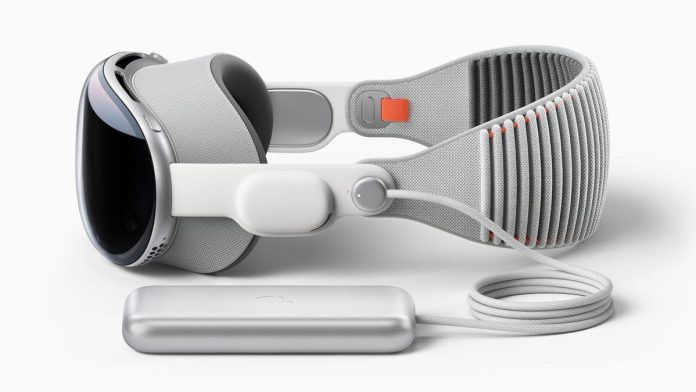A Groundbreaking Wearable with Limitless Potential
Apple recently unveiled its revolutionary new device, the Vision Pro, to widespread acclaim. This wearable computer stands out not only for its form factor, worn on the face, but also for its ground-breaking user interface and versatile capabilities. By projecting output directly into the user’s eyes with high-resolution displays, the Vision Pro eliminates the need for physical screens. Instead of relying on traditional input methods like keyboards or touchscreens, users can control the device through eye tracking and gestures.
The breakthrough design of Vision Pro features an ultra-high-resolution display system that packs 23 million pixels across two displays, and custom Apple silicon in a unique dual-chip design to ensure every experience feels like it’s taking place in front of the user’s eyes in real time.
Termed as a “spatial computer” by Apple, the Vision Pro takes advantage of the physical space around the user to display digital outputs. There are no limits to the perceived viewing area, enabling users to enjoy a cinema-sized movie while seated in a small space like an airplane seat. This innovative approach breaks down traditional constraints and opens up new possibilities for immersive experiences.
While Apple initially highlighted conventional use cases, such as using the Vision Pro as a computer or iPad with a flexible and unconstrained display, its true potential lies in augmented reality (AR) and virtual reality (VR) applications. Though Apple did not heavily emphasize these aspects during this announcement, the Vision Pro has the technical capabilities to display 3D objects in the user’s current environment or transport them to entirely new virtual spaces.
The Vision Pro represents a significant leap forward for AR and VR, offering users enhanced decision-making capabilities and increased productivity. VR immerses users in new contexts, bringing relevant information directly to them. AR, on the other hand, distills and presents pertinent information within a given context. These technologies can excel in scenarios where acquiring information is expensive or dangerous, or where digital overlays can clarify complex environments.
Apple’s strategic decision to announce the Vision Pro at its developer conference underscores the need for third-party innovation and applications. Developers are encouraged to explore the device’s potential, creating experiences that provide users with hard-to-access contextual information at the appropriate level of detail.
Just as previous Apple devices evolved beyond their initial use cases, the Vision Pro promises to follow suit. It represents an exciting step forward in wearable technology, with the potential to reshape how we interact with digital content and our surroundings. As the Vision Pro paves the way for new possibilities, developers and users alike eagerly anticipate the innovative experiences that will emerge on this groundbreaking platform. “Today marks the beginning of a new era for computing,” said Tim Cook, Apple’s CEO.
By Muhammad Umar




![[Message de l’Eid-Ul-Fitr 2024] Atteindre la piété… Et après ???](https://sundaytimesmauritius.com/wp-content/uploads/2023/10/Bashir-new-218x150.jpg)


![[Democracy Watch Mauritius] The Rwanda genocide started 7th April 1994, 30 years ago. Has humankind learnt the lesson? Consider Israel’s action in GAZA today!](https://sundaytimesmauritius.com/wp-content/uploads/2024/03/democracy_0-218x150.jpg)



![[EDITO] De coq à l’âne](https://sundaytimesmauritius.com/wp-content/uploads/2024/04/Zahirah-150x150.jpg)



![[EDITO] De coq à l’âne](https://sundaytimesmauritius.com/wp-content/uploads/2024/04/Zahirah-100x70.jpg)